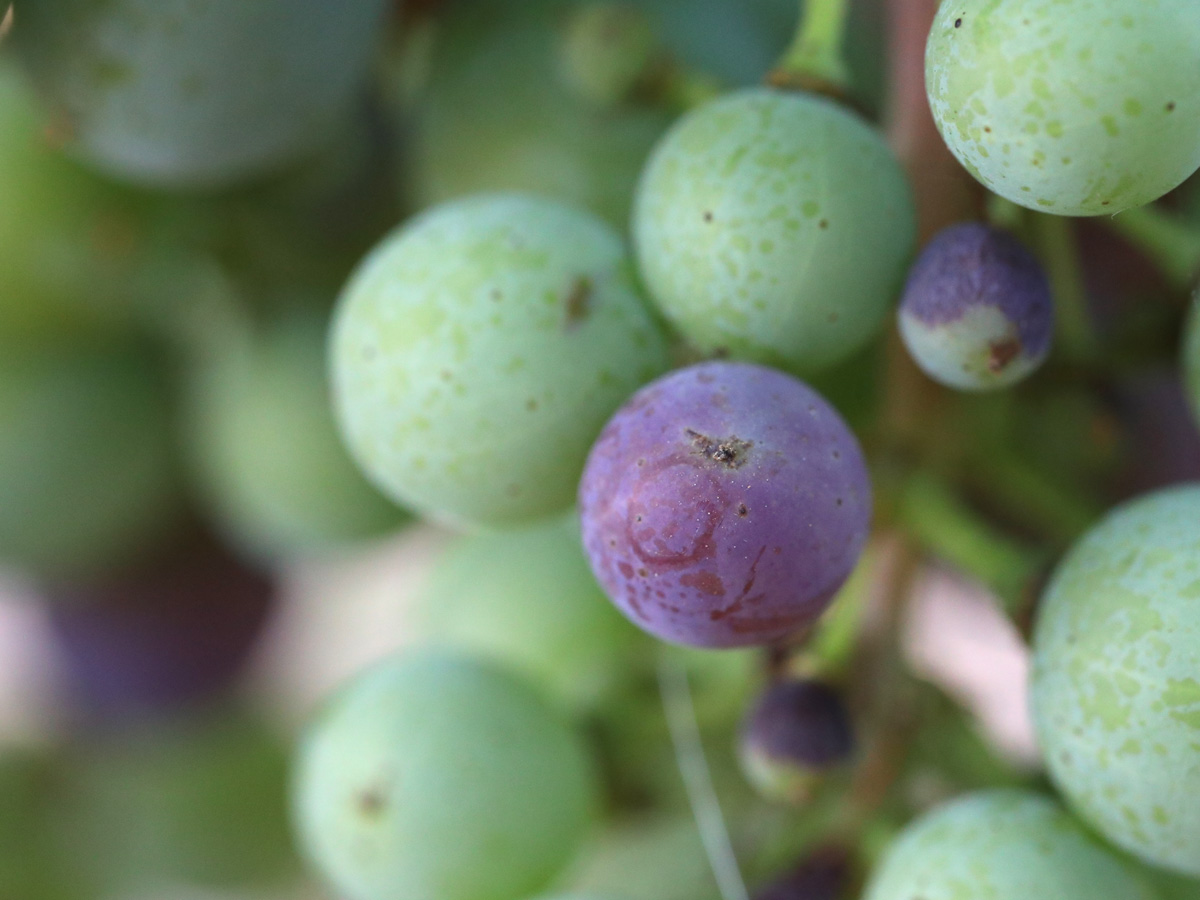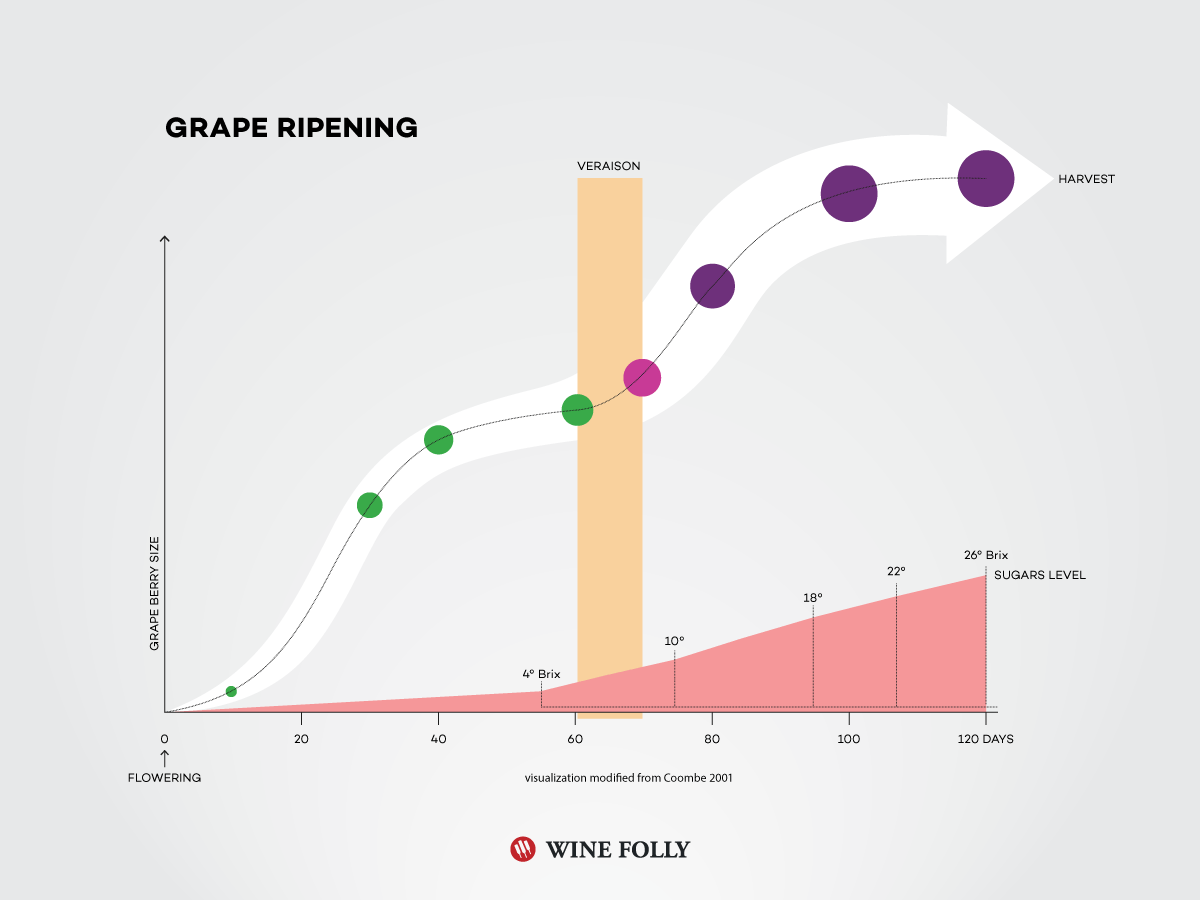One of the most important moments in a grapevine’s annual lifecycle is the onset of ripening, when the grapes turn from green to red and naturally begin to sweeten. The French call this process veraison (“verr-ray-zohn”).
Veraison also occurs in white grapes, but without the color changes–white grapes simply become more translucent.
See it For Yourself Go to a vineyard in the summer! Veraison starts in late July in the Northern Hemisphere and in late January in the Southern Hemisphere.

Veraison is very much the tipping point in a grapevine’s annual lifecycle. It’s when the vine alters it’s focus from energy creation (through photosynthesis) to energy consumption where it concentrates its energy into making sweet grapes.
The changing color (anthocyanin) and development of other polyphenols act as protectors to the grapes from sun, wind and other stresses.
Following the onset of veraison, the ripening process then takes anywhere from 30–70 days for the grapes to become fully ready to make wine!
Vines Change at Veraison
Before veraison, wine grapes are small, hard, highly acidic, and green-colored from the presence chlorophyll.
When veraison starts, the vine starts to transport its energy stores from the roots into the grapes. The chlorophyll is replaced by anthocyanins (red grapes) or carotenoids (white grapes), sugars, and other nutrients.
After veraison, the grapes begin to dramatically increase in size as they accumulate sugars (glucose and fructose measured in Brix) and start to develop aroma compounds.
Also during this time, the acid levels begin to fall in the grapes. Acids continue to fall and sugars continue to rise until the grapes are perfectly in balance and ready to be harvested.
- Cooler climates: winegrowers may choose to trim bunches from each vine in order to ensure the remaining bunches receive more nutrients and sugars from the roots.
- Warmer climates: some growers may also choose to trim leaves off the vine to slow the rate of ripening and accumulation of sugars to delay ripening until later in the year when temperatures are cooler.
For winegrowers, veraison is an important time because it signals a change in the way they care for their vines. Each region and each type of wine variety requires slightly different care to achieve perfect ripening.
Also, in regions with pests, such as birds or even red fruit-eating gnats, vineyards may be covered with nets to prevent the grapes from being eaten!
Certain Varieties Ripen More Unevenly
Some grape varieties have bunches that ripen very unevenly. Some will have ready and ripe berries on the same bunch as berries that are still green. Extreme uneven ripening is called millerandage and can produce wines that may smell sweet but that taste unbalanced, unripe or, “green.”
Uneven ripening happens commonly in varieties like Pinot Noir, Sangiovese, Malbec, Gewürztraminer, and Zinfandel; this is why they’re considered some of the hardest grapes to grow in the business!


